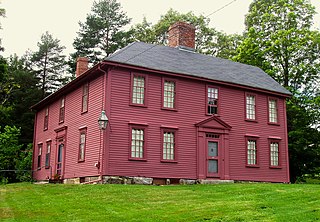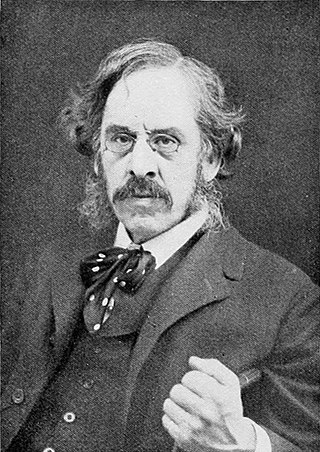Related Research Articles

Munroe Tavern, located at 1332 Massachusetts Avenue, Lexington, Massachusetts, is an American Revolutionary War site that played a prominent role in the Battle of Lexington and Concord. It is now preserved and operated as a museum by the Lexington Historical Society, with exhibits highlighting the role and perspective of the British soldiers during the outbreak of the war. The house is open for guided tours on weekends starting in April and daily from Memorial Day weekend until the end of October.

The origins of Clan MacCulloch are unknown, but there is a consensus that the family was one of the most ancient families of Galloway, Scotland, and a leading medieval family in that region. Despite the obscurity of the early history of the clan, the history and genealogies of the family are well documented in Walter Jameson McCulloch's History of the Galloway Families of McCulloch, which provides extensive footnotes for original Scottish charters, correspondence, and other primary source documentation. The latter provides family history for the following lines: Myretoun, Ardwell, Killasser, Torhouse, Drummorrell, Inshanks and Mule, Torhousekie, Cardiness, Barholm, Kirkclaugh, Auchengool, and Ardwall.
Colonel Robert Munro of Foulis, also known as the Black Baron, was traditionally the 18th Baron of Foulis in Scotland. He was a soldier of fortune, who served in Germany under the banners of Gustavus Adolphus, king of Sweden. It is not certain how he got his epithet of the 'Black Baron', but quite possibly it was from the colour of his hair rather than any perceived martial ferocity. Although this Robert Munro is traditionally 18th Baron and 21st overall chief of the Clan Munro, he is only the 11th Munro chief that can be proved by contemporary evidence.
George Munro of Auchinbowie, originally of Bearcrofts was a Scottish born military officer of the late 17th century. He was the first Munro of Auchinbowie.

The Battle of Bealach nam Broig was a battle fought between Scottish clans from the lands of north-west Ross, against north-eastern clans of Ross who supported the Earl of Ross. The actual date of the battle is debated, it probably occurred in 1452 but the Conflicts of the Clans suggests a date as early as 1299.

The Battle of Drumchatt was a Scottish clan battle that took place in 1497. The Clan Mackenzie and possibly the Clan Munro defeated the Clan MacDonald of Lochalsh at Drumchatt (Druimchat) or "the Cat's Back", a ridge to the southeast of Strathpeffer.

The Battle of Achnashellach was a Scottish clan battle said to have taken place in the year 1505, in the Scottish Highlands at Achnashellach. It was fought by the Clan Cameron against the Clan Mackay and the Clan Munro.
Robert Mor Munro, 15th Baron of Foulis, and 18th chief of the Clan Munro was a 16th-century Scottish chief. He was known as Robert Mor on account of his large stature. He was the eldest son of Robert Munro, 14th Baron of Foulis. Although this Robert Munro is traditionally 15th Baron and 18th overall chief of the clan, he is only the 8th Munro chief that can be proved by contemporary evidence.
Hugh Munro, 9th Baron of Foulis was a 14th – 15th century Scottish soldier and said to be 12th chief of the Clan Munro in the Scottish Highlands. Hugh was seated at Foulis Castle in Ross-shire, Scotland. Although Hugh is traditionally the 9th Baron and 12th overall chief of the clan, he is only the 2nd Munro chief that can be proved by contemporary evidence.
Robert Munro, 14th Baron of Foulis was a Scottish soldier and clan chief of the Highland Clan Munro. He was seated at Foulis Castle. Although he is traditionally the 14th Baron and 17th overall chief of the clan, he is only the 7th Munro chief that can be proved by contemporary evidence.

Colonel William Munroe was a soldier in the American Revolutionary War. He was the orderly sergeant of the Lexington militia at the Battle of Lexington and Concord and as a lieutenant at the Battle of Saratoga. He was also a militia colonel and a prominent man politically in the town of Lexington.

Edwin Munroe Bacon was an American writer and editor who worked for the Boston Daily Advertiser and The Boston Globe and also wrote books about Boston, Massachusetts, and New England. His books include Bacon's Dictionary of Boston.

The chiefs of the Scottish highland Clan Munro, the Munros of Foulis, are according to tradition, descended from a Donald Munro of Foulis who died in 1039. However, their descent can only be proved by contemporary evidence back to a Robert de Munro who died in 1369.
George Munro of Foulis is traditionally the 10th Baron and 13th successive chief of the Clan Munro. However, he is only the third successive chief of the clan who can be proved by contemporary evidence. He was the eldest son of Hugh Munro, 9th Baron of Foulis and was seated at Foulis Castle.
Sir Benedict Munro, Baron von Meikeldorf was a Scottish soldier of the English and Scottish Civil War who settled in Germany during the mid 17th century. He is believed to have been born between 1615 and 1630.
Sir William Munro of Foulis was a Scottish Knight and Scottish clan chief of the highland Clan Munro. He is by tradition the 12th Baron of Foulis and 15th overall chief of the clan. However, he is actually only the 5th chief of the Clan Munro who can be proved by contemporary evidence.

Clan Munro is a Highland Scottish clan. Historically the clan was based in Easter Ross in the Scottish Highlands. Traditional origins of the clan give its founder as Donald Munro who came from the north of Ireland and settled in Scotland in the eleventh century, though its true founder may have lived much later. It is also a strong tradition that the Munro chiefs supported Robert the Bruce during the Wars of Scottish Independence. The first proven clan chief on record however is Robert de Munro who died in 1369; his father is mentioned but not named in a number of charters. The clan chiefs originally held land principally at Findon on the Black Isle but exchanged it in 1350 for Estirfowlys. Robert's son Hugh who died in 1425 was the first of the family to be styled "of Foulis", despite which clan genealogies describe him as 9th baron.
Hector Munro, 17th Baron of Foulis, also known as the master of Foulis, was a Scottish chief of the Highland, Scottish clan, Clan Munro. He is the 10th chief of Clan Munro who can be proved by contemporary evidence. He was seated at Foulis Castle.

Sir Hugh Munro, 8th Baronet, born 25 October 1763, was a Scottish noble and also the chief of the Clan Munro, a Scottish clan of the Scottish Highlands. By tradition he was also the twenty-sixth Baron of Foulis. Before he died a dispute took place over the legitimacy of his daughter, resulting in a lawsuit.

The Battle of Drumchatt, or Druim-a-Chait, was a Scottish clan battle claimed by non-contemporary historians to have taken place in the year 1501 near Strathpeffer, in the Scottish Highlands. It was allegedly fought between the Clan Mackenzie and the Clan Munro. Mackenzie chronicles have claimed a signal victory.
References
- 1 2 3 4 5 6 Munroe, James Phinney (1900). A Sketch of the Munro Clan also of William Munro who, deported from Scotland, settled in Lexington, Massachusetts, and of some of his Posterity. 272 Congress Street, Boston: George H. Ellis. pp. 19-30. Retrieved March 1, 2022.
{{cite book}}: CS1 maint: location (link) - 1 2 Mackenzie, Alexander (1898). History of The Munros of Fowlis With Genealogies of the Principal Families of The Name: To Which Are Added Those of Lexington and New England. Inverness: A. & W. Mackenzie. pp. 342-347, 559–573. Retrieved March 1, 2022.
- ↑ "Munro DNA Project - Group 08 - William Munroe of Lexington, MA". familytreedna.com.
Sign In allows viewer to see more participants in all DNA groups who have chosen to keep their DNA results hidden from people who are browsing and who are not signed in to the website. The DNA descendants of the Munros of Foulis are in Group 11
- ↑ Lexington Historical Society (Munroe Tavern)
- ↑ Herndon 1896, p. 836.
Bibliography
 This article incorporates text from this source, which is in the public domain :Herndon, Richard (1896). Bacon, Edwin M. (ed.). Men of Progress: One Thousand Biographical Sketches and Portraits of Leaders in Business and Professional Life in the Commonwealth of Massachusetts. Boston: New England Magazine. p. 836.
This article incorporates text from this source, which is in the public domain :Herndon, Richard (1896). Bacon, Edwin M. (ed.). Men of Progress: One Thousand Biographical Sketches and Portraits of Leaders in Business and Professional Life in the Commonwealth of Massachusetts. Boston: New England Magazine. p. 836.